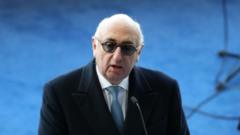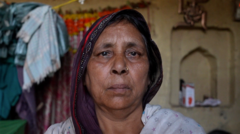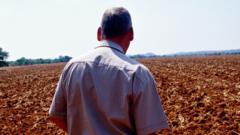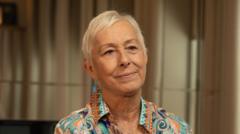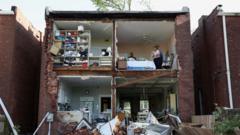Families living near Coldwater Creek in St. Louis, Missouri, are grappling with high cancer rates they suspect may originate from radiation exposure due to decades-old nuclear waste. Despite a historical compensation program ending with limited coverage, community advocates are pushing for more support and research on potential health impacts.
Coldwater Creek: Unraveling the Radiation-Related Health Crisis

Coldwater Creek: Unraveling the Radiation-Related Health Crisis
Residents near Coldwater Creek express growing concerns over cancer rates linked to historical nuclear waste, fearing that their idyllic childhoods may have come at a grave cost.
After putting her son to bed at a St. Louis hospital, Kim Visintine immersed herself in research, desperate to understand her infant's rare brain tumor diagnosis. Zack, suffering from a glioblastoma multiforme, succumbed to cancer by age six, prompting Visintine to connect with a troubling narrative: children in her community were experiencing similar fates due to proximity to Coldwater Creek.
Historically, this area was the dumping ground for uranium waste dating back to the Manhattan Project, and local fears of radiation exposure have surged in recent years. Residents accuse officials of neglecting health risks linked to past nuclear activities, with the Radiation Exposure Compensation Act—aimed at providing funds to those affected by such exposures—expiring without extending protections to the St. Louis area.
Despite evidence from the National Cancer Institute suggesting that numerous cancers in the region could be tied to radiation, local health officials report only a "small" predicted increase in cancer cases due to this exposure. Kim Visintine and fellow residents like Karen Nickel, who grew up in what they deemed a "fairytale" community, now recount tales of loss—15 members from Nickel's childhood street have succumbed to rare cancers.
Advocacy group Just Moms STL aims to protect the community from future exposures and seeks to expand access to the expired compensation program. Their concerns resonate deeply within the community: Teresa Rumfelt observed many pets die from cancer and suffered the loss of her sister to ALS—a disease suspected of having a potential link to radiation exposure.
Healthcare professionals are taking note, with some, like Dr. Gautum Agarwal, emphasizing the importance of screening for nearby residents. However, opinions diverge among experts; Roger Lewis, from St. Louis University, argues that while fear exists, statistical data do not conclusively link the local cancer cases to Coldwater Creek.
As the EPA and local authorities continue a lengthy cleanup of the contaminated area, residents like Visintine grapple with an unsettling reality—many see their future overshadowed by an expectation of illness stemming from their 'ideal' childhood surroundings. "In our community, it's almost accepted that cancer is just a matter of time," she reflects, embodying the collective anxiety tied to their past.




